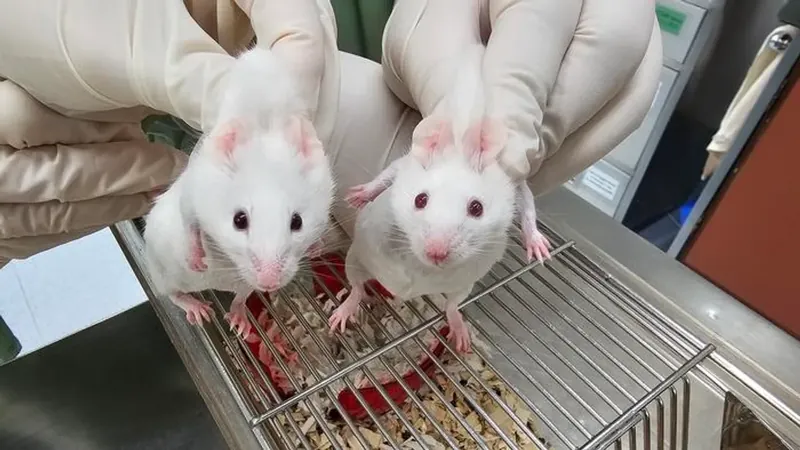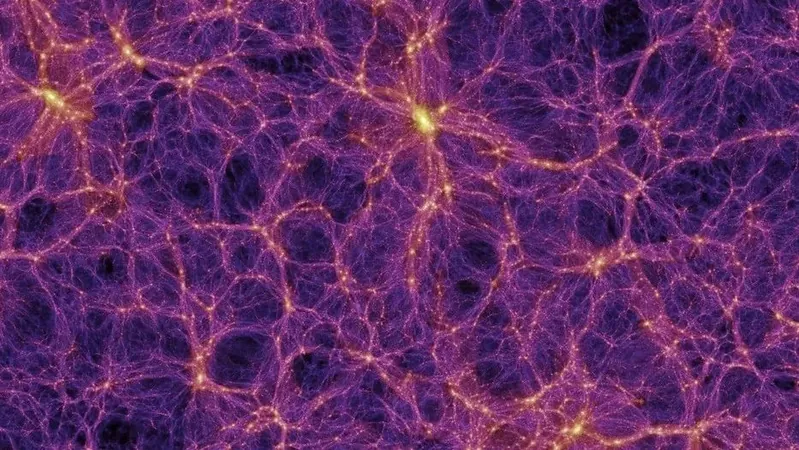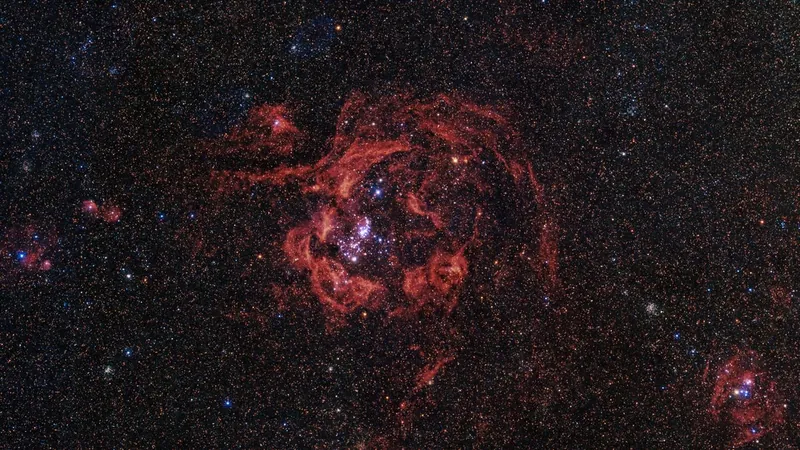
Groundbreaking Discovery: Ancient Genes Bring Chimeric Mice to Life!
2024-11-19
Author: Yu
Groundbreaking Discovery: Ancient Genes Bring Chimeric Mice to Life!
In a scientific breakthrough that could revolutionize the field of biology, researchers have successfully created mouse stem cells using genes obtained from ancient single-celled organisms, uncovering a connection that spans nearly a billion years of evolution. This remarkable achievement raises fundamental questions about the origins of stem cells and the biological foundations that define multicellular life forms.
Dr. Alex de Mendoza, a pioneering researcher at Queen Mary University of London, stated, “This study implies that crucial genes for stem cell formation may have emerged long before these cells existed, potentially shaping the evolution of complex life.”
This innovative research stemmed from a collaborative effort between Dr. de Mendoza and a team at The University of Hong Kong. Together, they explored the functionality of ancient genes from choanoflagellates—simple, single-celled organisms that share a common ancestor with animals. By reprogramming mouse cells using these ancient genetic tools, the team successfully produced pluripotent stem cells capable of developing into various cell types.
A New Perspective on Stem Cell Formation
Stem cells play a pivotal role in the development of animals, possessing the unique ability to self-renew and differentiate into specialized cell types like those found in the liver, skin, and brain. The regulation of pluripotency in these cells has traditionally been attributed to certain transcription factors unique to animals, namely Sox2 and Oct4. However, emerging evidence suggests that those factors might have deeper roots in our evolutionary past.
Choanoflagellates, often regarded as "living fossils," exhibit genetic similarities to animal life, specifically ancient versions of the Sox and POU genes involved in stem cell development. The study's researchers replaced the native Sox2 gene in mouse cells with its choanoflagellate counterpart, ultimately demonstrating that these modified cells could transform into functional pluripotent stem cells.
Injecting these stem cells into developing mouse embryos resulted in chimeric mice showcasing striking features such as distinctive black fur patches and dark eyes—evidence that the ancient genes were capable of integrating seamlessly into complex mammalian development.
A Glimpse into Evolutionary Biology
While this research confirms that ancient choanoflagellate genes can partake in the creation of pluripotent stem cells, it also exposes limitations related to the POU factors derived from these organisms. Unlike animal-derived Oct4 proteins, the POU proteins from choanoflagellates lacked specificity necessary for inducing pluripotency. This discrepancy could provide insights into the genetic modifications central to the evolution of animal stem cells.
The significance of these findings extends beyond mere curiosity. By demonstrating that ancient single-celled genes play crucial roles in contemporary stem cell processes, the door has swung wide open for new research avenues in regenerative medicine. Dr. Ralf Jauch from the University of Hong Kong asserts, "Understanding the ancient origins of these genetic components can lead us to innovative strategies to enhance pluripotency, optimizing treatments for tissue repair and combating degenerative diseases."
The implications are profound: synthetic versions of these ancient genes may one day exceed the capabilities of their modern animal-derived equivalents in stem cell therapies, thus facilitating expedited recovery for damaged tissues.
A Remarkable Journey Through Time
This groundbreaking research not only reshapes our understanding of how multicellular life evolved but also illustrates evolution's ability to repurpose existing cellular mechanisms. The early forms of Sox and POU proteins, which initially supported basic cellular functions in choanoflagellates, have been repurposed over eons to form the intricate structures of complex animals.
Dr. de Mendoza encapsulated the essence of this discovery: “By developing a mouse using genetic materials derived from our single-celled relatives, we witness an extraordinary continuity of biological functions that transcend nearly a billion years.”
Thus, the study serves as both a fascinating glimpse into our evolutionary history and a monumental leap toward advancing current medical science. The future of regenerative medicine may very well hinge on lessons learned from the humble beginnings of life itself.




 Brasil (PT)
Brasil (PT)
 Canada (EN)
Canada (EN)
 Chile (ES)
Chile (ES)
 España (ES)
España (ES)
 France (FR)
France (FR)
 Hong Kong (EN)
Hong Kong (EN)
 Italia (IT)
Italia (IT)
 日本 (JA)
日本 (JA)
 Magyarország (HU)
Magyarország (HU)
 Norge (NO)
Norge (NO)
 Polska (PL)
Polska (PL)
 Schweiz (DE)
Schweiz (DE)
 Singapore (EN)
Singapore (EN)
 Sverige (SV)
Sverige (SV)
 Suomi (FI)
Suomi (FI)
 Türkiye (TR)
Türkiye (TR)